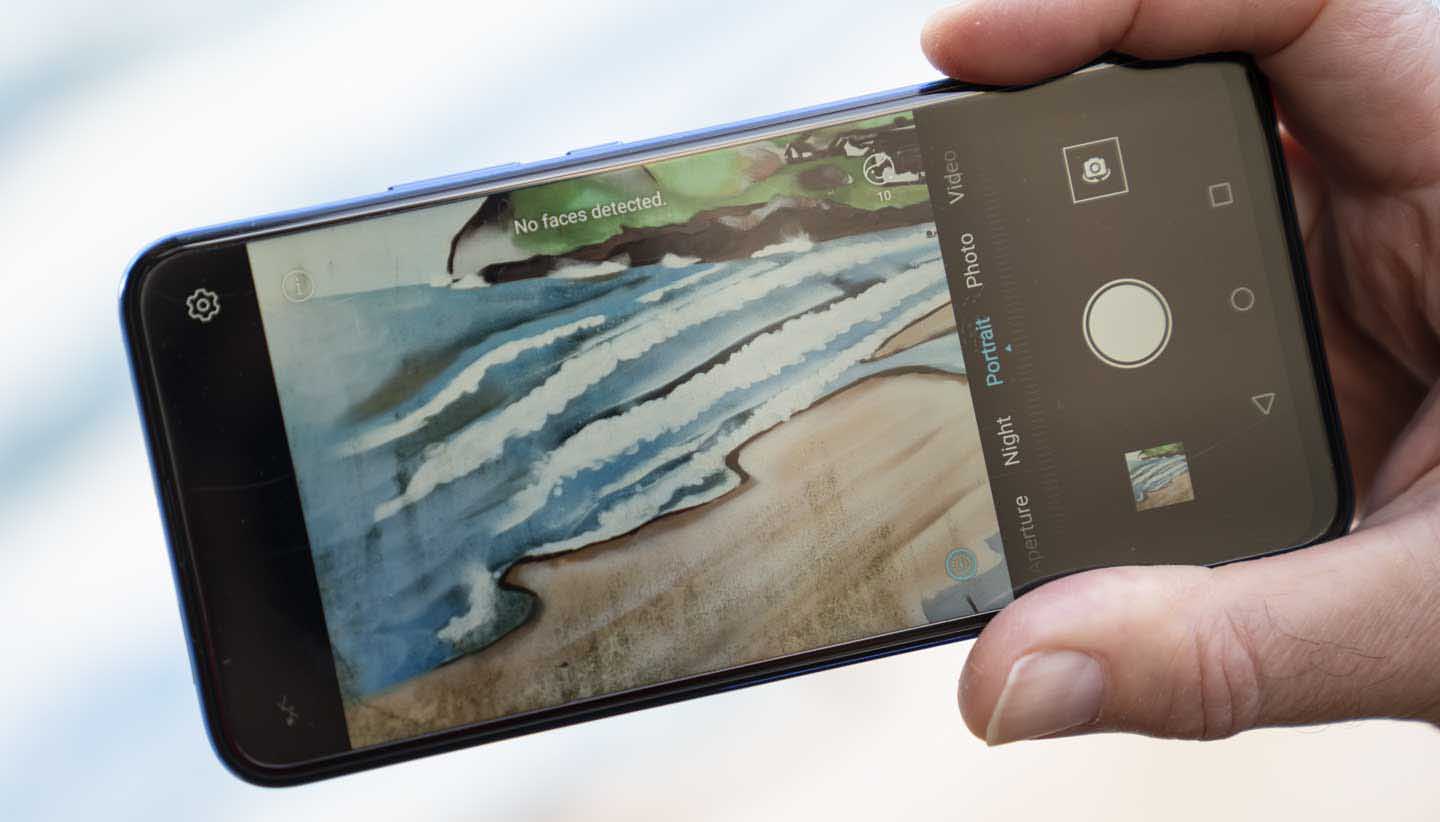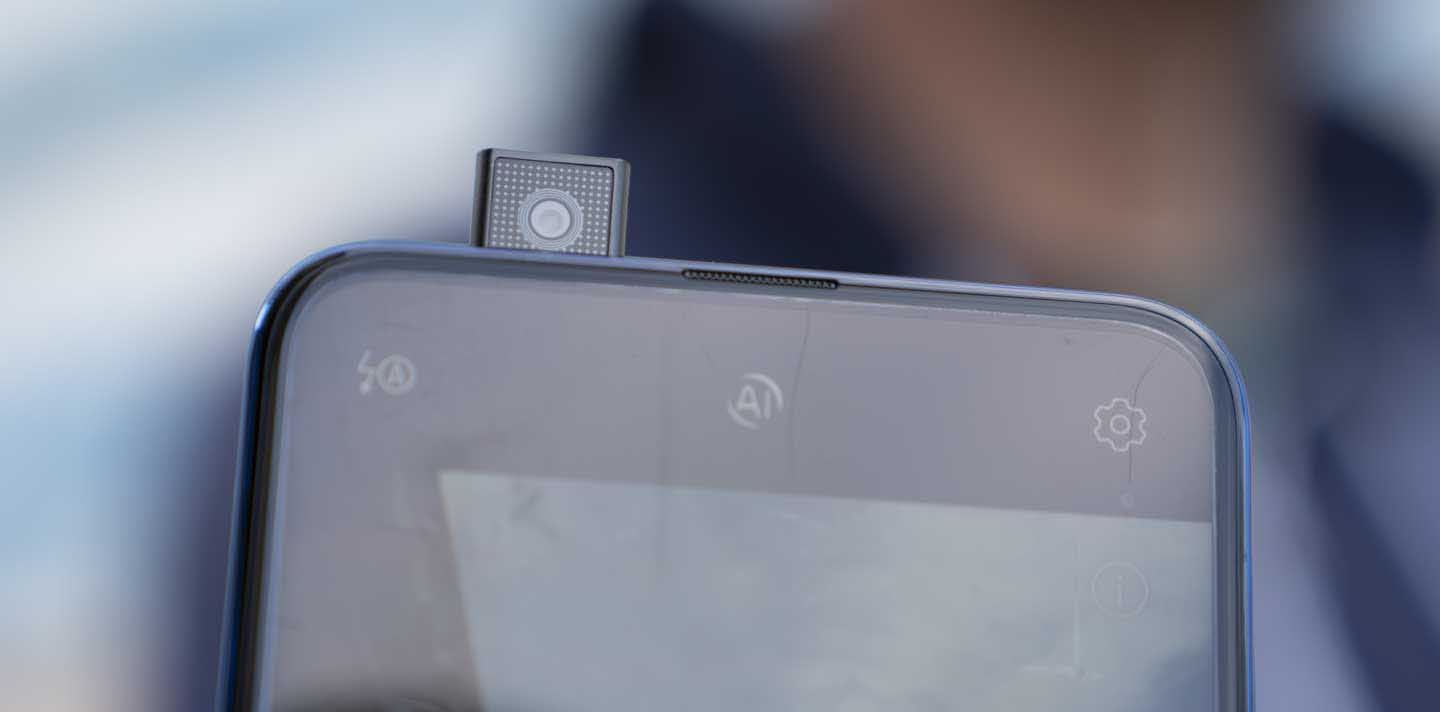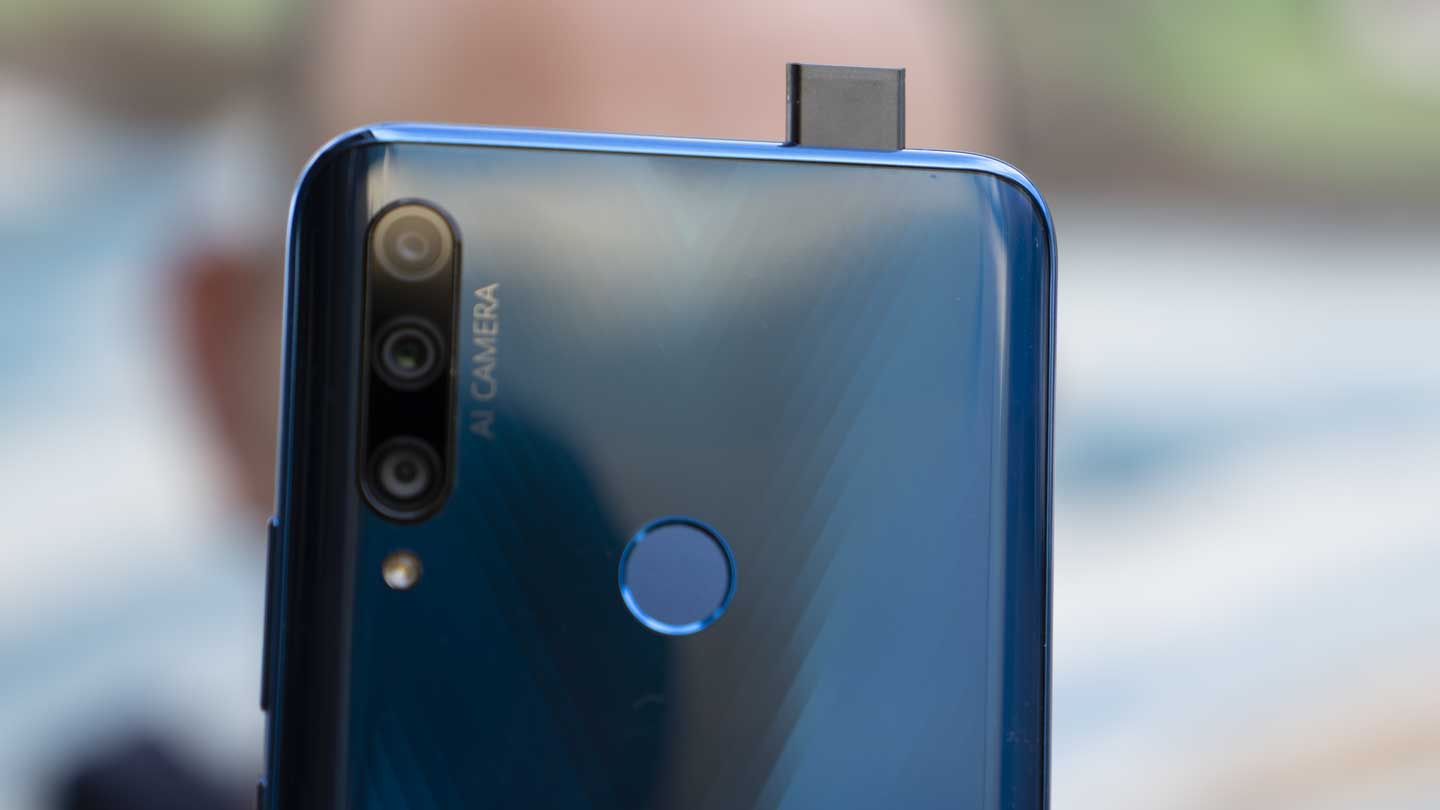Honor is Huawei’s ‘youth’ brand. That means Honor’s smartphones tend to be more affordable and packed with cool features.
However, we only really concern ourselves with the camera and the Honor 9X has a triple camera arrangement that combines a 48Mp 1/2-inch-types sensor behind an f/1.8 lens with an 8Mp super-wide f/2.4 camera that has a 120-degree field of view.
The third camera is a 2Mp depth camera that helps with assessing scenes shot in modes like Aperture and Portrait to get the right degree of background blur.
There’s also a 16Mp selfie camera that pops-up from the top of the phone. That means that there’s no notch or dead space in the Honor 9X’s screen. Consequently, you can use the whole area for viewing images or video.
Cleverly, the 9X can detect when it’s being dropped or the selfie camera is knocked and it retracts the camera.
It’s weirdly satisfying to pop-up the selfie camera, but more usefully, it draws attention so people tend to look at it rather than the screen when you’re taking a shot.
It’s nice to see a microSD card slot. That’s useful for extra storage and it’s compatible with cards of up to 256GB capacity.

Artificial Intelligence (AI)
High-end smartphones make use of AI to assess the scene and apply appropriate settings and processing. The main effect, however, usually seems to be ramping up the saturation and sharpening, so it’s nice to be able to turn it off now and again.
With that in mind, the Honor 9X has an AI button at the top of the screen. Tapping this turns the AI on and off.
However, there are a few modes where this functionality isn’t available.
Photo Mode
The default shooting mode in the native camera app is Photo mode. In this mode, the camera seems to take most things in its stride very well. If the light level is low, the 9X takes a long exposure or a few shots and tells you to hold it steady.
On the whole, it assesses the exposure well, but in tricky situations you can tap on the screen and drag down or up to adjust the exposure.
Aperture Mode
In Aperture mode, you get the option to adjust the ‘aperture’ and this affects how sharp or blurred the background is in the image. Then, once you’ve taken the shot, you can shift the point of focus and change the aperture to adjust the degree of blur.
This shifting of focus and blur is all computational, the aperture doesn’t actually change. The Honor 9X captures an image with lots of depth of field (ie most of the scene is in focus) and then you can apply blur to give the effect of shooting with a wide aperture.
Portrait Mode
Portrait mode uses the background-blurring capability of aperture mode, but you can’t control the degree of blur.
However, you can decide what ‘beauty level’ you want to apply and there’s a selection of effects that can be applied to the background.
Using a high beauty level applies more skin smoothing that a low level. Pushing up to 10 doesn’t flatter your subjects in more ways than one.
Night Mode
Night mode is one of the most in-demand features of a smartphone camera and it’s present on the Honor 9X. When this is selected, the camera takes a series of shots that are combined to create a correctly exposed, sharp image without lots of noise.
Although you need to hold the phone still when shooting in Night mode, it’s designed to enable you to shoot handheld at night.
Night mode is one of the modes in which you have no control over whether AI is used or not
Pro Mode
If you’re keen to have a lot of control over your images, you need to tap ‘More’ in the shooting mode options of the native camera app then select ‘Pro’. You then have control over the metering, sensitivity (ISO 50- 3,200 plus Auto), shutter speed (30-1/4000sec plus Auto), exposure compensation (Ev), focus mode (AF-S, AF-C or Manual) and white balance.

Build and Handling
The Honor 9X may not have all the credentials of a flagship phone like the 4-camera Huawei P30 Pro, but it feels good in your hand. All the controls are within easy reach so you can use it one-handed.
Honor has stuck with the usual layout for the native camera app with the shooting mode icons arranged along the bottom of the frame and the settings accessed via the cog icon at the top right. The AI control is also at the top of the screen and is coloured when it’s active.
When the camera app is open, you just need to tap on the camera icon to switch to the selfie camera. It pops-up read for use.
The 6.59-inch screen shows plenty of detail. Enough to highlight when halos are appearing along the horizon when the AI is in use. The viewing angle is also impressively good, so you can shoot from a very low angle without crawling on the ground.

Performance
Generally speaking, the Honor 9X produces attractive images in a wide range of shooting conditions. However, be careful with the AI control as it tends to deliver images that look oversharpened and in some cases over-saturated.
That over-sharpening manifests itself as bold edges along some elements in the image. Some areas, such as the horizon in a landscape, sometimes have a halo.
Night mode generally works like a dream. You can also get sharp low-light shots in Photo mode, but the range of colours, especially in the highlights, is better in Night mode.
I’m also impressed with the performance in Aperture mode. The Honor 9X does a good job of recognising the subject and applies blur convincingly. I haven’t spotted any weird artefacts or major issues.
The results in Video mode are also good but you’re limited to Full-HD recording. Unless you walk like a cat, it’s best to shoot from one position to avoid jerky video when you move.
There’s a useful electronic level visible in Pro mode. It would be great if this was available in other shooting modes as well as it really helps with getting horizons straight.

Selfie Camera
A knock-on effect of having a camera that only pops up when you want to use it is that the lens stays a bit cleaner than one that’s permanently on display.
This camera renders in focus details naturally, without excessive sharpening. However, some out of focus details can look slightly smudged. Also, if you’re squeezing lots of people into the frame, any heads close to the edges of the frame may look a bit distorted. It’s not a major issue, but something to watch out for.
Sample Images
Verdict
Because of the US trade ban, there’s still some uncertainty around Huawei and Honor phones. Nevertheless, the Honor 9X uses the Android operating system and has all the usual Google software onboard.
However, this review focuses on the camera system and the Honor 9X’s puts in a good performance. On the whole, I’d keep the AI turned-off unless your image lacks a little pep. The Night mode is also excellent, enabling you to create images with impact in very dark conditions without a tripod.
Those who like to blur backgrounds will love the Aperture mode, it does a very good job. The pop-up selfie camera also performs well, but there’s a bit of distortion towards the edges of the frame.



